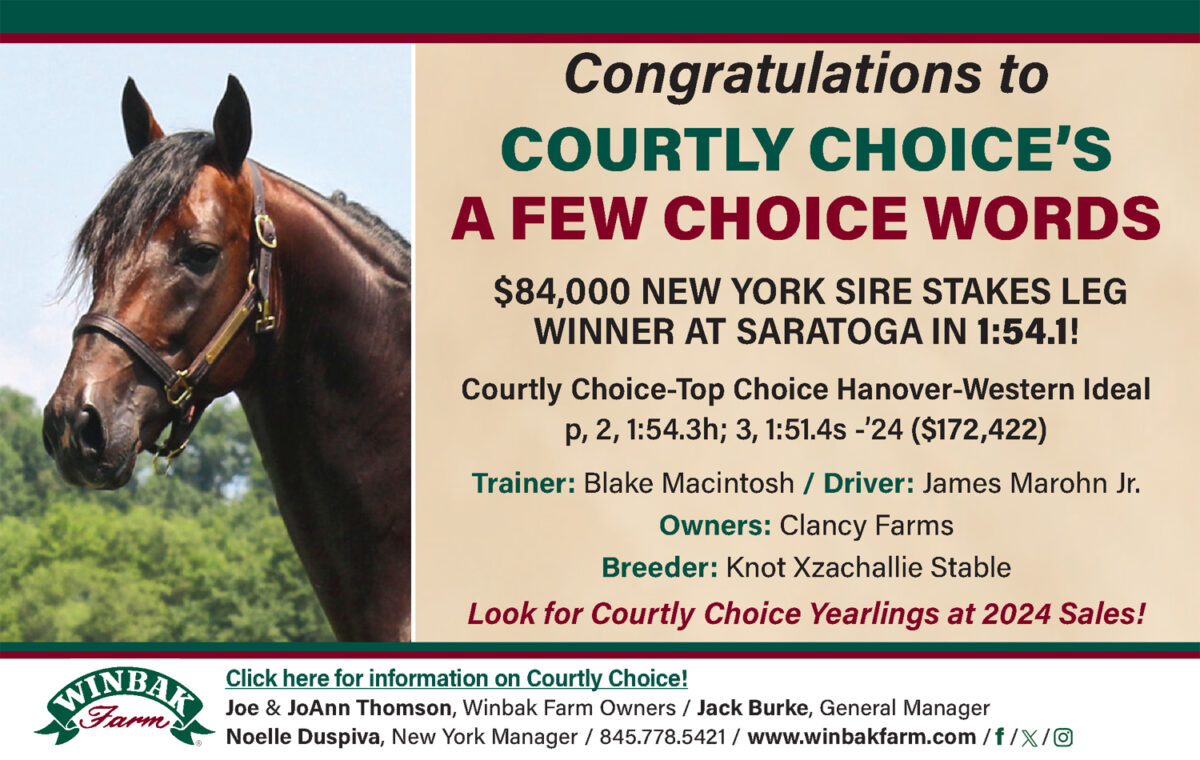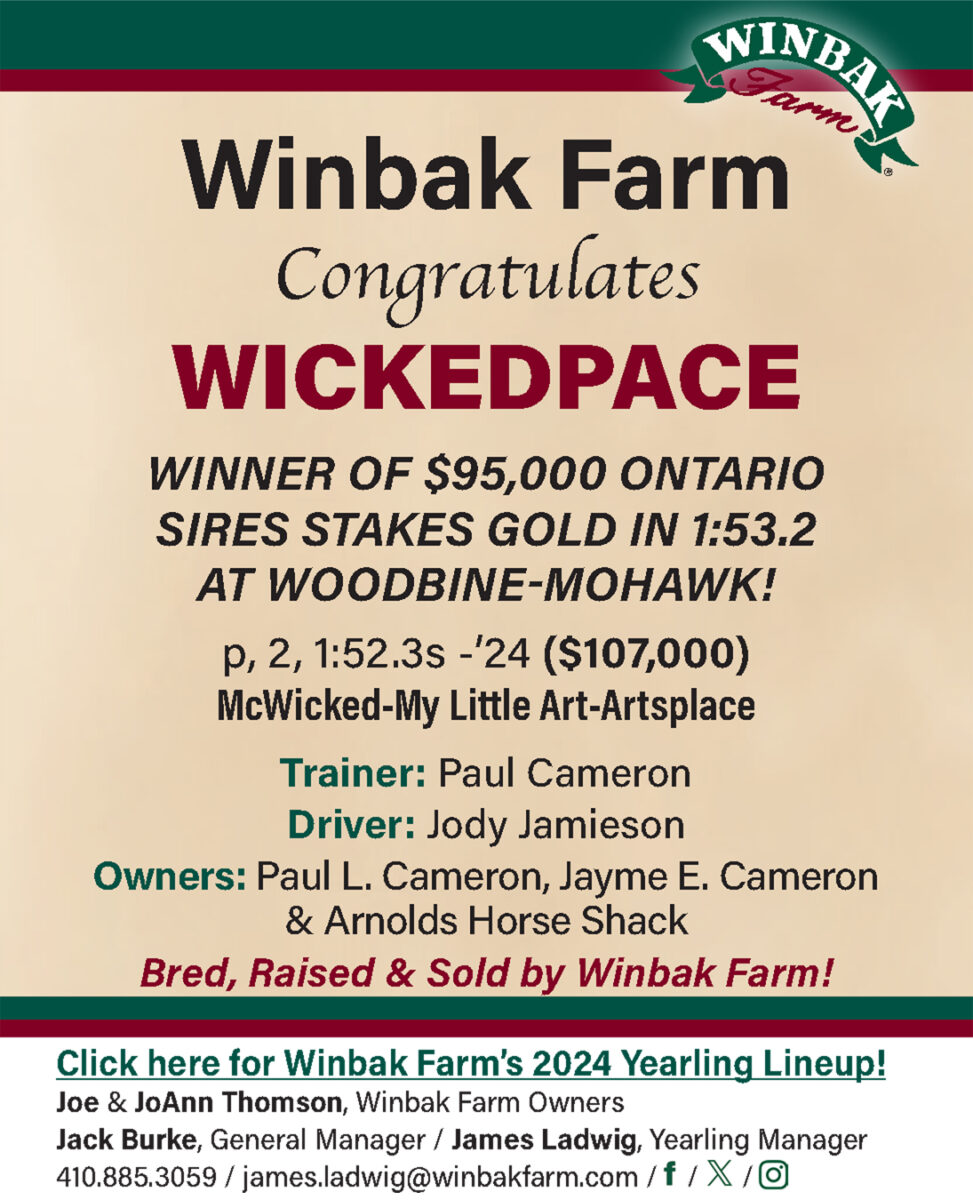

Harness racing’s priceless gem
The Harness Racing Museum and Hall of Fame in Goshen, NY is home to more than 70,000 artifacts that preserve the rich history of the sport.
by Dave Briggs
Janet Terhune would love to increase membership numbers at the Harness Racing Museum and Hall of Fame in Goshen, NY, but, more importantly, she wants more people to visit the museum to appreciate what a treasure it is for the industry.
“I welcome, encourage and embrace anyone that wants to join the Harness Racing Museum and Hall of Fame. It’s a dime a day, or more, if they are willing. But, really, the biggest thing is that they’ve got to come and visit us,” said Terhune, the museum’s executive director. “People who don’t even know anything about harness racing go through it and say, ‘This is fantastic. I can’t believe this has been in this town for the last 66 years and I’ve never been here.’
“Although the museum is located in Goshen, New York, we never lose sight that it represents the interests of everyone that is connected with harness racing everywhere. It’s the sport’s permanent showcase and we are a nationally-recognized, professionally-run museum that houses 70,000 artifacts and we do it very, very well. Each exhibits probably takes two years to come to fruition. It’s not just a throw-it-up-on-the-wall-and-hope-it-stays thing. It’s a well thought out and deliberate effort.
“The museum strives to be the primary harness racing resource for historical information and artifacts.”
Though the museum houses the Hall of Fame and plays host to the annual induction ceremony, Terhune is quick to stress the museum does not elect the Hall of Famers. That’s done by the United States Harness Writers’ Association (USHWA).
Terhune said the museum had just over 16,000 visitors in 2016. There were 751 museum members at the end of its last fiscal year, a number which is just 4.5 per cent of the 16,582 people who are U.S. Trotting Association members.
Membership, which starts at $35, “shows industry engagement, which is helpful to us when we are writing grants,” Terhune said. “We write a lot of grants, looking for money from corporate or state and federal funding institutions. The money is there and we try to get it. When your membership is engaged, you stand a better chance of getting those grants, quite honestly. Stand up and get counted as a member. Be proud to be a member of it, because it really is a cool place.”
Terhune said Goshen is also in close proximity to a number of major racetracks — some 50 miles north of the Meadowlands, 60 miles north of Yonkers, and 90 miles east of Pocono Downs.
“If you’re already there to race, make the trip and spend a couple of hours,” Terhune said.
There’s always tons to see, including Greyhound’s stall which opened to the public on July 2. Terhune said the acquisition of the stall from Doc Flanery’s farm — where the great trotter lived in Maple Park, IL from 1950 until his death in 1965 — is an interesting tale of preserving one of harness racing’s greatest artifacts.
“The farm was becoming more and more rundown and two women in Illinois were watching it and they received notice that they were going to raze the building in the spring. So, they went over in November and they took down his entire stall, which was 12 by 21 of oak ceiling, oak walls,” Terhune said. “It was a beautiful stall. Took it down, board by board and numbered every single board and drew diagrams and kept great records. They packed it all up and stored it for the winter and then drove it out to the museum in May of 2014.
“We weren’t sure where we were going to put it, but we were sure we wanted it. I think it has ended up in the absolute best place that it could possibly be and that’s directly off the old stable and directly off the hallway to Haughton Hall. So there’s easy accessibility. The sitting room was also dismantled and numbered… It really is a terrific exhibit of his living quarters.”
As an indication of the high esteem in which Greyhound was held by his connections, Terhune said, “his stall was air conditioned, but the sitting room was not.”
Apart from adding Greyhound’s stall to the museum, Terhune and her team have also been busy launching a new website, which can be found at: https://harnessmuseum.com.
“The website project ended up being far longer than it should’ve been, but it’s a vast improvement over the previous site,” she said. “You can access much of the collection. You can read about Hall of Famers and their bios. We are continually adding photographs of both horses and humans to their specific entries. That information is now available online for the first time ever.”
Terhune is now trying to launch some projects to better preserve important harness racing history. She would like to have past performance microfiche transferred to a digital format.
“This is a really deteriorating medium. Microfiche are stable in a controlled environment, but they are not forever. It’s always good to get them to a digital format,” Terhune said.
Though she has wanted to digitize the information for many years, the quotes to perform the work were too high until just recently, she said.
“On a whim last year, I called a company and gave them the details, number of fiche, images. He sent a quote of about $15,000. Now, we’re talking. Now, it’s do-able” with help funding the project.
“We are really talking about fleshing out a lot of past performance histories that have never been available before in (the USTA’s) Pathway (system) and that’s the ultimate goal.”
The next step would be to digitize the museum’s collection of film, periodicals and books.
“We have an enormous number, probably 8,000 in the library, that are just screaming for help. They are in a controlled environment so they are pretty stable, but none of that is stable for life or forever,” Terhune said.
She said the museum’s historic collection provides a comprehensive archive tracing the origins of the American Standardbred horse and harness racing from their beginnings among the breeding farms and racetracks of New York State to today’s international stage.
“Stamina, speed and an even temperament made the standardbred the perfect road horse. The new trotting bred was also exciting to drive and watch giving rise to a new competitive sport that has left a legacy of beautiful art and complex artifacts” including the nation’s preeminent collection of harness drivers’ jackets and caps, representing drivers from the late 1800s through today, and more than 570 Currier & Ives lithographs, believed to be the largest compilation of the company’s trotting horse prints in the world.
All of it is housed in a 1913 Tudor style horse stable in a pretty little New York town.















